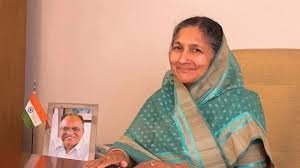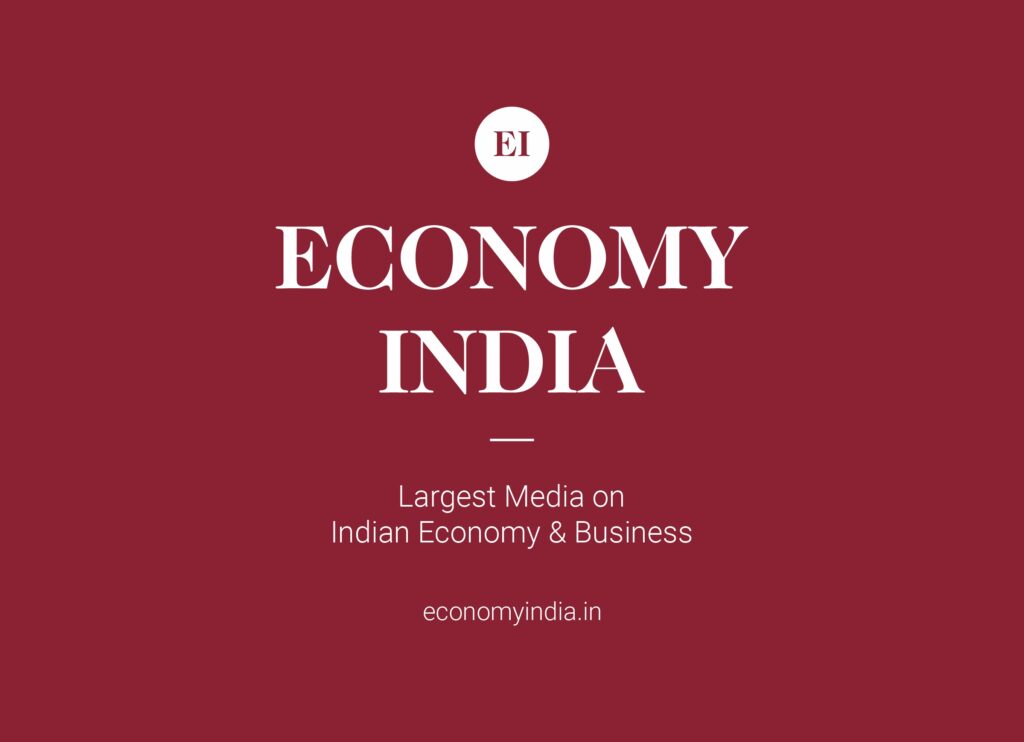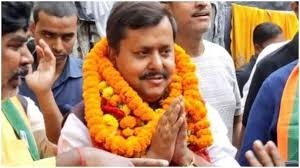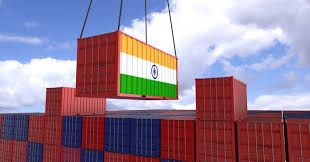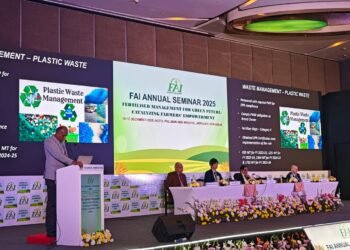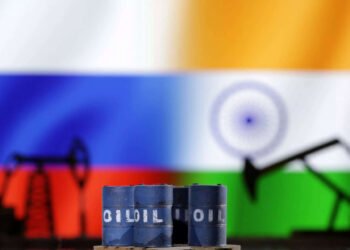From a village girl to the matriarch of a steel-to-energy empire, Savitri Jindal’s story defines resilience, leadership, and legacy in Indian industry.
By Economy India Bureau
The Rise of India’s Richest Woman
In a defining moment for Indian business history, Savitri Jindal, chairperson of the O.P. Jindal Group and MLA from Hisar, Haryana, has been named India’s richest woman in the latest Forbes India Rich List 2025.
With a staggering net worth of $39.6 billion, she now ranks third in India, after Mukesh Ambani and Gautam Adani, and 48th globally.
Her fortune grew by $4.1 billion in just six months, rising from $35.5 billion in April 2025. This remarkable surge came even as the collective wealth of India’s top 100 billionaires fell by 9% to $1 trillion.
Savitri Jindal, who represents Hisar in the Haryana Legislative Assembly, is not just a business leader — she is the matriarch of one of India’s most powerful industrial families and a symbol of quiet strength in corporate India.

From Homemaker to Industrial Titan
Born on March 20, 1950, in Tinsukia, Assam, Savitri Devi was married at just 15 years old to O.P. Jindal, then a 35-year-old steel entrepreneur from Haryana.
Her husband, a visionary industrialist, had already started building a business empire in steel and infrastructure.
For years, she remained a homemaker, caring for her extended family of ten children — O.P. Jindal’s six from his first marriage and four from hers. Her life changed dramatically after O.P. Jindal’s death in a helicopter crash in 2005, when she had to step into leadership — both at home and in business.
“After his death, I had to become both mother and father,” Savitri Jindal said in an interview with Asia One Magazine.
“I was a simple Indian woman taking care of my family. But when destiny demanded it, I carried forward his dream — to unite the family and the business.”
The O.P. Jindal Legacy: Built on Iron, Cement, and Faith
The story of the Jindal empire begins in Hisar’s Nalwa village, where O.P. Jindal, born to a farmer’s family, dreamed of creating India’s own steel brand.
After World War II, when U.S. military surplus steel flooded Indian markets, young O.P. Jindal saw an opportunity. He began by buying discarded steel pipes in Assam and reselling them in Kolkata.
In 1952, he established his first manufacturing unit, Jindal India Limited, near Kolkata — producing pipes and sockets.
By 1960, he returned to Hisar and opened a bucket manufacturing factory, laying the foundation of what would become a vast industrial group.
Soon after, he launched Jindal Strips Limited in 1969 — now known as Jindal Stainless.
From these humble beginnings, the Jindal Group expanded into steel, power, cement, infrastructure, and energy, becoming a cornerstone of India’s industrial revolution.
The Turning Point: 2005 and Beyond
The tragic helicopter crash of 2005, which took O.P. Jindal’s life, could have fragmented the business empire. But Savitri Jindal stepped up — determined to preserve her husband’s vision and unity within the family.
Under her matriarchal guidance, the conglomerate was strategically divided among their four sons:
- Sajjan Jindal – Head of JSW Group (steel, cement, energy, paint, and ports).
- Naveen Jindal – Chairman of Jindal Steel & Power (JSPL), headquartered in Delhi.
- Ratan Jindal – Managing Director of Jindal Stainless Ltd., one of India’s largest stainless steel manufacturers.
- Prithviraj Jindal – Involved in Jindal SAW Ltd., specializing in pipes and infrastructure.
This decentralization ensured that each business thrived independently, yet stayed under the broader “Jindal” legacy — a rare success story of family unity in Indian conglomerates.
Sajjan Jindal’s Global Expansion
Under Sajjan’s leadership, JSW Steel became India’s second-largest private steel company and a global player.
In 2023, JSW Infrastructure went public successfully, followed by a landmark move in 2024, when the company acquired a 35% stake in MG Motor India, entering the electric vehicle (EV) space through a partnership with China’s SAIC Motor.
This bold diversification demonstrated the Jindal Group’s evolving ambition — from traditional steel to futuristic technologies.
Naveen Jindal: The Political and Business Heir
Naveen Jindal, the youngest son, is both an industrialist and a politician. Currently a BJP Member of Parliament from Kurukshetra, he also heads Jindal Steel & Power.
A strong advocate for energy self-reliance and industrial reform, Naveen has been instrumental in JSPL’s expansion into green steel and renewable energy.
Savitri Jindal’s own political career began soon after her husband’s demise.
In 2005, she contested and won the Hisar by-election, entering the Haryana Legislative Assembly. She later became a Cabinet Minister in the Haryana government, proving that her influence extended well beyond the boardroom.
The Family Philosophy: Strength in Unity
Savitri Jindal often emphasizes that her family’s strength lies in unity and mutual respect.
“Today, when even two brothers find it hard to live together, I am proud that all my children remain united — in heart and purpose,” she once said.
“Love and trust are the keys to our success.”
Her leadership style is marked by humility and quiet authority — she is not a businesswoman in the conventional sense but the moral compass that guides one of India’s largest family-run empires.
Economic Impact: The Jindal Group’s Footprint
Today, the Jindal Group collectively employs over 100,000 people across steel, power, cement, and infrastructure sectors.
Its combined turnover exceeds ₹2.5 lakh crore ($30 billion) annually, contributing significantly to India’s industrial GDP.
From ports in Maharashtra to steel plants in Odisha and Chhattisgarh, the group’s operations are integral to India’s Make-in-India and green manufacturing missions.
Wealth and Influence
According to the Forbes India Rich List 2025, Savitri Jindal’s net worth jumped from $35.5 billion in April to $39.6 billion in October, primarily driven by JSW Steel’s market rally and JSPL’s expansion in renewable projects.
Her wealth now surpasses that of several Indian billionaires in IT and pharmaceuticals, making her the only woman in India’s top five richest.
Globally, she ranks 48th, placing her alongside women business icons such as Alice Walton and Françoise Bettencourt Meyers.
A Symbol of Strength and Simplicity
Despite her enormous wealth, Savitri Jindal remains deeply connected to her roots. She still visits Hisar frequently, attending local events and supporting rural education, women’s empowerment, and healthcare.
Her philanthropic initiatives through the Jindal Foundation focus on skill development, girls’ education, and sustainable rural development, reflecting her belief that wealth carries a responsibility to uplift others.
Public Reaction and Legacy
Social media and business communities across India hailed her rise as a “triumph of perseverance and legacy”.
Her story resonates especially with Indian women entrepreneurs — as a symbol that leadership can emerge from unexpected places.
Economists say the Jindal Group’s growth mirrors India’s transition from a manufacturing economy to a global industrial force.
The Matriarch of Modern Indian Industry
From a teenage bride in Assam to the richest woman in India, Savitri Jindal’s journey is an extraordinary tale of courage, compassion, and continuity.
She embodies the quiet power that sustains Indian family enterprises — proving that leadership is not always about aggression, but about conviction and care.
As India’s industrial landscape evolves, the Jindal legacy — built on steel, unity, and service — continues to shine brighter than ever.
(Economy India)


